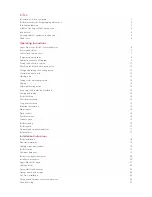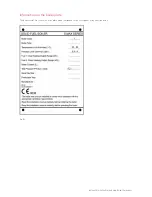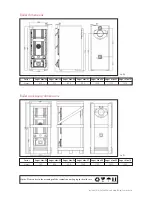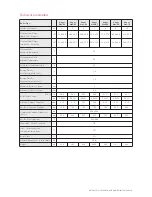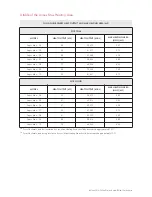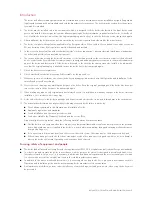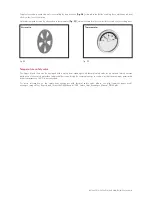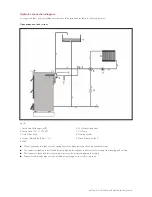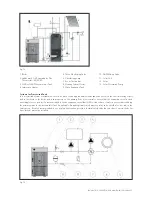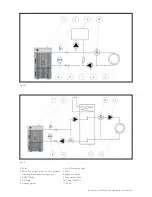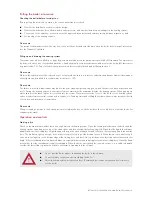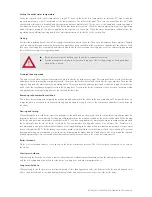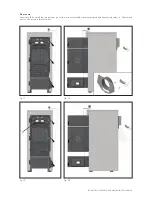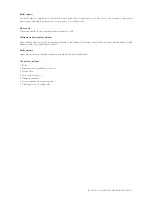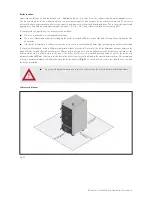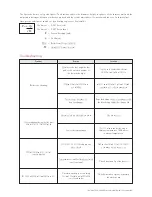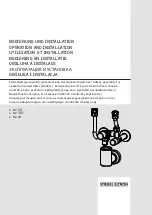
INSTALLATION, OPERATION AND MAINTENANCE MANUAL
14
Setting the outlet water temperature
When the required outlet water temperature is say 60°C, heat up the boiler to a temperature for instance 5°C higher than the
required temperature of 60°C (measured on the thermometer on the boiler outlet pipe). Then turn the control knob to 65°C and
check whether the chain is stretched and the regulating hatch completely shut. This position of the chain and regulating hatch is
fine-adjusted by turning the control knob.Then let the regulation process work. When the water temperature drops, the regulating
hatch will start opening by the tension applied by the regulator on the chain. When the water temperature suddenly rises, the
regulating hatch will start opening and the hot water temperature on the boiler outlet is controlled.
Stoking
First shut the regulating hatch; this will shut supply of combustion air into the boiler. Then open the chimney flap completely. Partially
open the stoking door and wait until all combustion gases have been sucked from the combustion chamber into the chimney. Only
then open the stoking door completely and start stoking the boiler. After shutting the stoking door, set the chimney flap again and
restore the functioning of the regulating hatch.
■
Boiler doors must not be held open as the boiler is continously working.
■
Provide a minimum 5cm gap to be between top point of the fuel and ceiling of stoking chamber
when boiler is stoked.
Overnight heating mode
This mode is used when you want to maintain the fire in the boiler for instance over night. First scrape all ash out of the combustion
chamber, with the chimney flap completely opened. Then stoke the boiler with fuel and shut the boiler up completely. Then shut the
chimney flap and also almost shut the regulating hatch. This will reduce the chimney thrust and restrict the supply of combustion
air.Shut also the secondary air supply rosette in the stoking door. To restore the boiler’s required output, just open the chimney flap
and partially open the regulating hatch to the required boiler output.
Removing solid combustion residuals
This is done by removing and emptying the ashtray situated underneath the stoker in the ash compartment. This must be done on
a regular basis to prevent ash from accumulating and blocking the supply of air to the combustion chamber from underneath
the stoker.
Dewing and tarring
When starting fire in a cold boiler, water condensates on the walls and runs down into the ash compartment, which may make an
impression that the boiler is leaking. This dewing will disappear after the astray has settled on the boilers inside walls. When running
the boiler with low water temperature usually below 65°C, or when using damp fuel, water condensates in combustion gases and
the condensate runs down the boiler’s cold walls. Low temperature heating also reduces the chimney life. Therefore it is
recommended to equip the boiler with for instance a four-way blending valve which will ensure that the temperature of return water
does not drop below 50°C. Boiler tarring occurs under similar conditions (lack of combustion air, the boiler is choking). To prevent
dewing and tarring, we recommend you run the boiler at temperatures higher than 65°C and choose a boiler to match the required
heating system output. An oversized boiler suffers unnecessarily, because it has to be run at low temperatures.
Boiler shutdown
We do not recommend that you try to speed up the boiler combustion process. The fuel must burn completely on its own on
the stoker.
Short term shutdown
After shutting the boiler down, clean it, remove all combustion residuals,empty the ashtray, clean the stoking door contact surfaces
and the ash compartment, and then shut the boiler’s stoking door and ash compartment door.
Long term shutdown
When shutting the boiler down for a protracted period of time (heating season end), the boiler must be thoroughly cleaned from
all soot and ash sediments, in which dampness accumulates and causes excessive corrosion of the boiler body.

